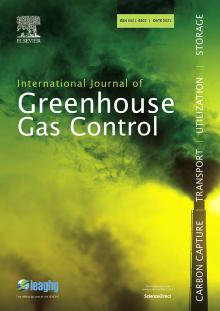Bacon Joins Greenhouse Gas Control Editorial Board
PNNL computational scientist appointed associate editor for carbon storage

PNNL computational scientist Diana Bacon’s role as carbon storage associate editor uses her expertise in subsurface modeling and quantitative risk assessment.
(Photo by Andrea Starr | Pacific Northwest National Laboratory)
Diana Bacon, a computational scientist with Pacific Northwest National Laboratory (PNNL), was appointed to the International Journal of Greenhouse Gas Control editorial board. Bacon will act as an associate editor for carbon storage, an area she has conducted research in for the past 15 years.
The peer-reviewed journal focuses primarily on carbon capture, transport, utilization, and storage. As an associate editor, Bacon will play a vital role in curating high-quality contributions on carbon storage and helping in the editorial review process for special issue publications. These duties align with Bacon’s expertise in quantifying the risk of groundwater contamination from geologic carbon storage projects. These skills were a primary contributor to developing the U.S. Department of Energy's (DOE) National Risk Assessment Partnership (NRAP) award-winning toolset.
Carbon management work aligns with journal

Additionally, the journal invites research covering applied science and engineering advances in control of greenhouse gas emissions and reductions of atmospheric concentrations through carbon dioxide capture, transport, and storage. To review these types of journal submissions, Bacon will also rely on experience gained from developing simulations of underground injection of carbon dioxide for the Midwest Regional Carbon Sequestration Partnership and as part of PNNL’s field demonstration of carbon storage in basalt at Wallula, Washington.
The journal also publishes results of experimental and pilot studies, technology demonstrations, process design and optimization, and techno-economic, policy, and life-cycle analyses. This corresponds with Bacon’s NRAP technical leadership role and lessons learned through collaboration of five national laboratories to quantify the risks related to geologic carbon storage.
Bacon and her colleagues have applied NRAP tools to various DOE Carbon Storage Assurance Facility Enterprise projects, demonstrating commercial-scale geologic carbon sequestration. Bacon is also currently applying deep learning to develop fast surrogate models for pressure management during carbon storage operations as part of the DOE’s Science-Informed Machine Learning to Accelerate Real-Time Decisions Initiative.
Bringing her research interests in carbon sequestration, machine learning, parallel computing, multiphase flow, reactive transport, and carbon cycling in the vadose zone, Bacon joined PNNL in 1986. She is a member of PNNL’s Subsurface Transport Over Multiple Phases development team and has contributed to the parallelization and application of the code to radioactive waste form weathering, carbon sequestration, and contaminant remediation at lab- and field-scale.
She earned a PhD in geology from Washington State University and went on to take part in an NRAP Toolset team that received an R&D 100 Award in 2017.
Published: July 12, 2021